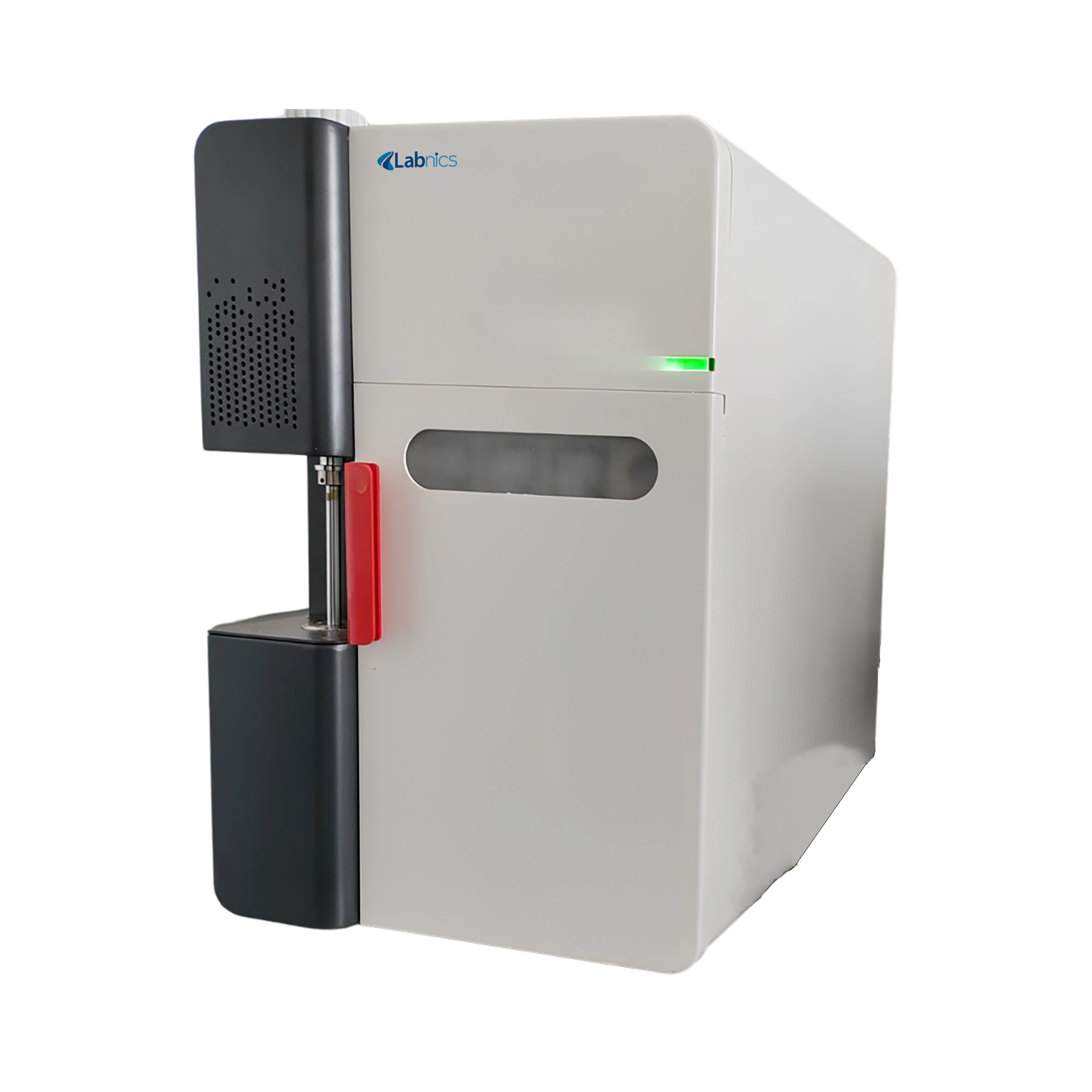IR Carbon Sulfur Analyzer NCSA-402 features a dual-channel detection system for high carbon and low sulfur analysis. It supports sample types like glass and nichrome wire with gold-plated electrodes, ensuring stable signal output. This has a low detection limit and high repeatability that delivers industrial-grade performance. Our detectors offer long-term reliability up to 30,000 hours. This compact design and serial connectivity enable seamless integration in quality control labs.
| Measurement Channels |
2 Sets (High Carbon, Low Sulfur) |
| Sample Compatibility |
Glass, Nichrome wire |
| Detector Reliability |
Switzerland, 30,000 hours without failure |
| Electrode Material |
Gold-plated |
| Signal Output |
Digital quality |
| Carbon Measurement Range (C) |
0.0001% to 20% (expandable to 100%) |
| Sulfur Measurement Range (S) |
0.00001% to 5% (expandable) |
| Minimum Detection Limit |
0.01 ppm |
| Carbon Measurement Precision |
≤ 0.5% |
| Sulfur Measurement Precision |
≤ 1.5% |
| Micropore Structure |
Metal micropores |
| Carrier Gas System |
Japan SMC components |
| Connectivity |
Serial port |
| Power Consumption |
2.5 kW |
FAQ for IR Carbon Sulfur Analyzer NCSA-402
1: What is the carbon detection range of the IR Carbon Sulfur Analyzer NCSA-402?
The IR Carbon Sulfur Analyzer NCSA-402 measures carbon from 0.0001% to 20%, which can be expanded up to 100%. This makes it highly suitable for a wide variety of manufacturing and quality assurance applications.
2: Can this IR Carbon Sulfur Analyzer NCSA-402 analyze sulfur content in ultra-low concentrations?
Yes, IR Carbon Sulfur Analyzer NCSA-402 offers sulfur detection from as low as 0.00001% up to 5%, expandable for broader applications. This precision is especially valuable in electronics and specialty glass manufacturing.
3: What types of samples can IR Carbon Sulfur Analyzer NCSA-402 test besides metals?
In addition to metals, IR Carbon Sulfur Analyzer NCSA-402 efficiently tests ceramics, glass, and nichrome wires, making it a versatile solution across multiple sectors such as metallurgy, electronics, and industrial ceramics.

